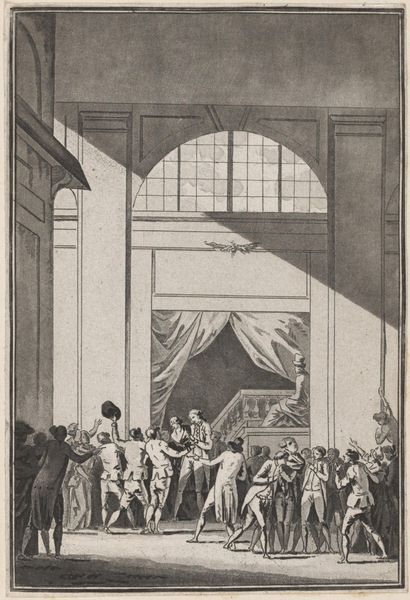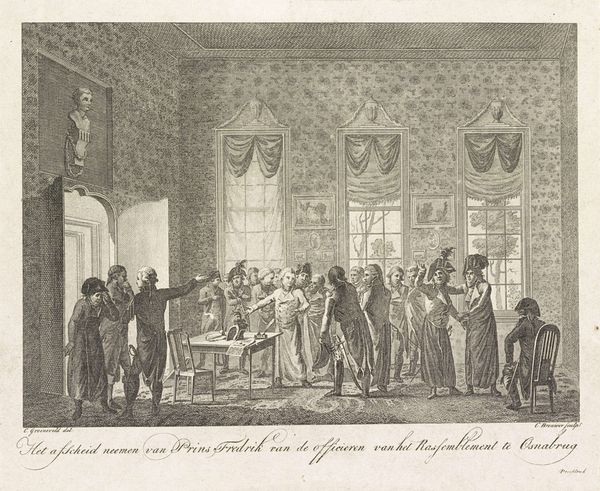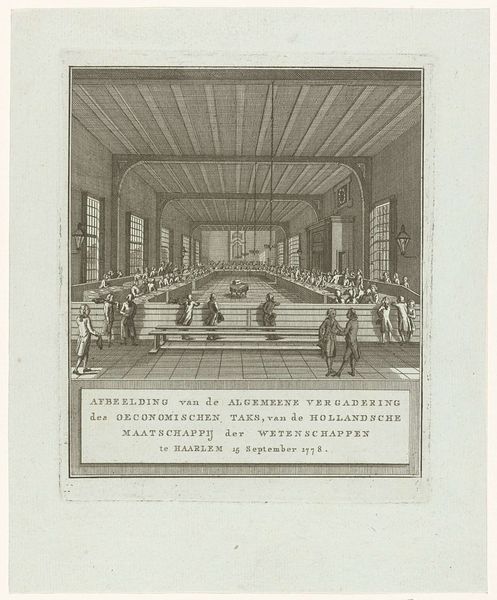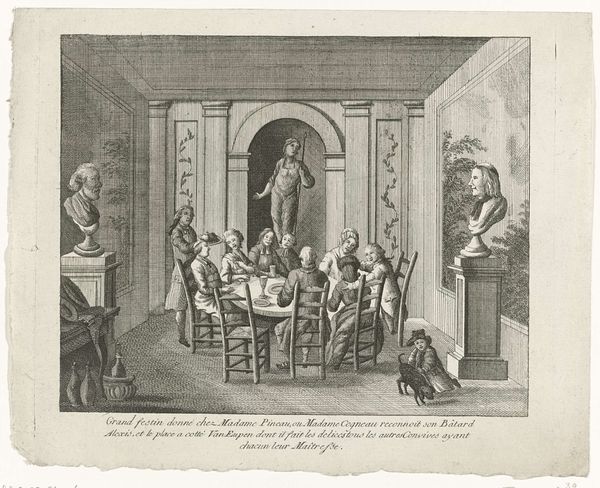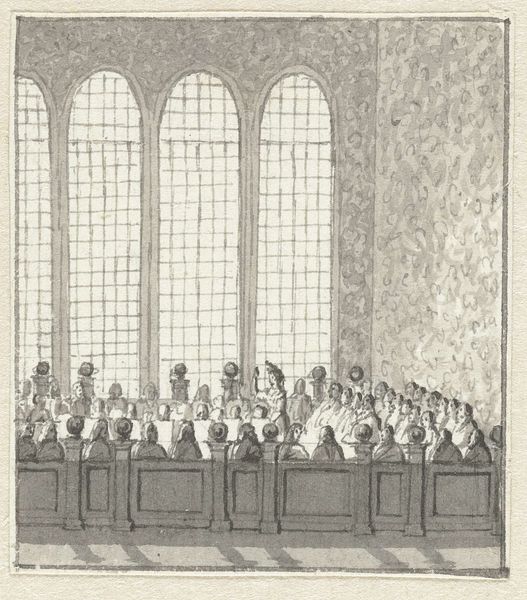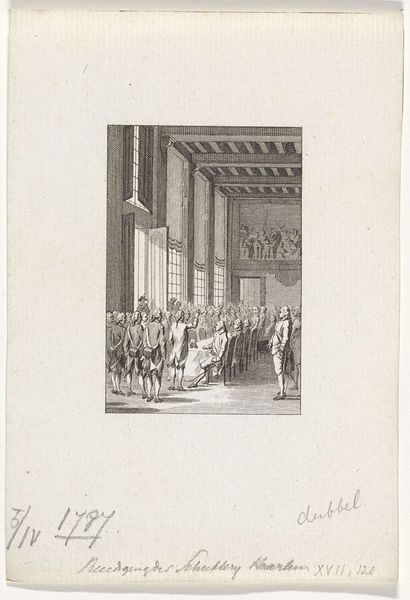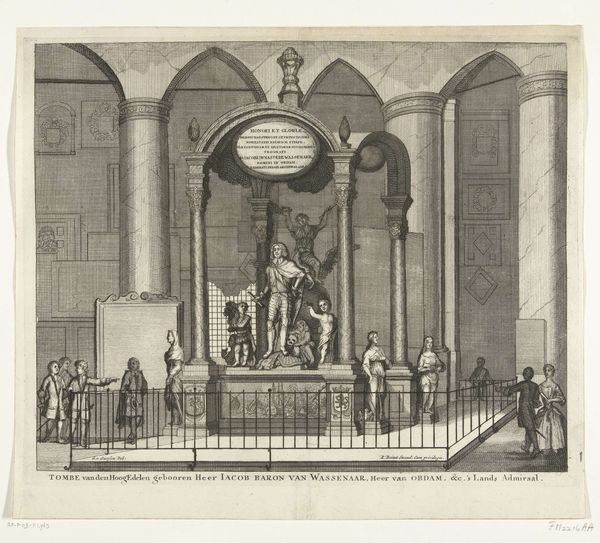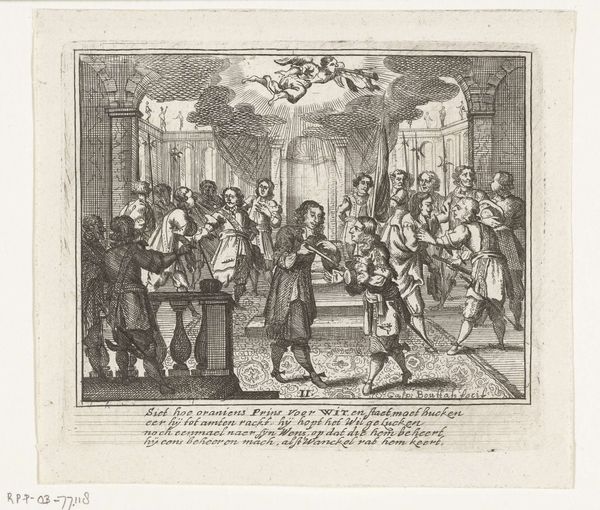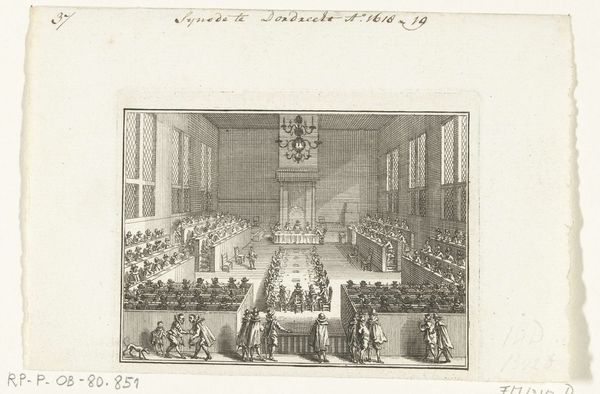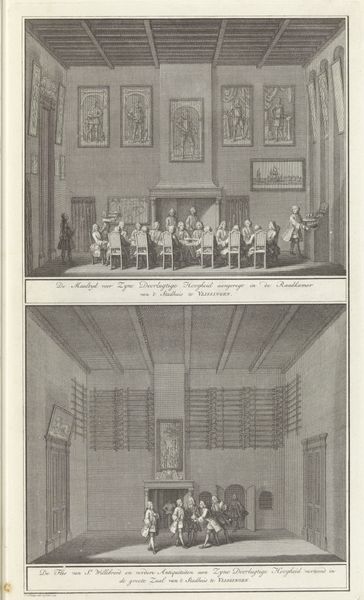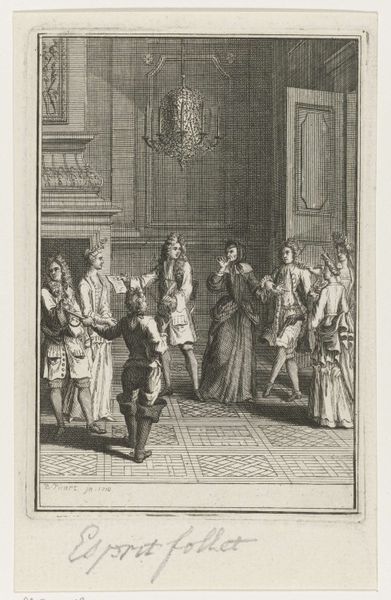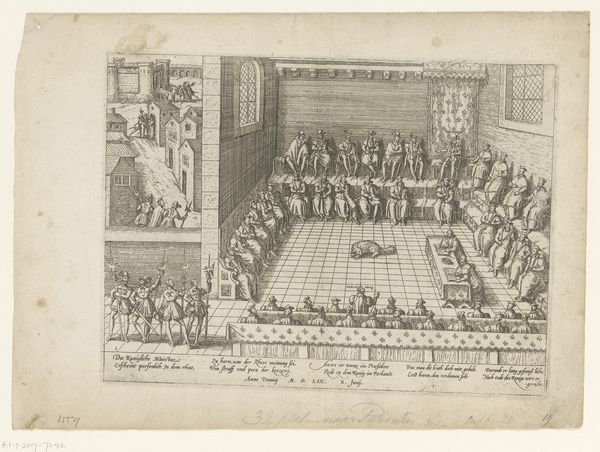
print, engraving
#
dutch-golden-age
# print
#
old engraving style
#
figuration
#
line
#
cityscape
#
genre-painting
#
history-painting
#
engraving
Dimensions: height 174 mm, width 135 mm
Copyright: Rijks Museum: Open Domain
Curator: This engraving, dating from 1785, captures the drawing of the lottery by the Dutch East India Company, or VOC. Editor: The whole thing looks rather clinical, doesn't it? Stark. Lots of perpendicular lines. Yet, those turning lottery wheels filled with children also strike a whimsical note, don't they? The future and innocence are so intertwined. Curator: Precisely! Those wheels—cages, almost—are so central. The kids pull out the winning tickets. Note the sober onlookers. Each element has a powerful resonance when seen as a kind of theater of fortune. Editor: Fortunes built and lost. I see how the cityscape depicted behind them might act like a character, too. As if to say: here’s what’s at stake. Trade, empire, all dependent on this sort of random draw. Like life, really. Curator: The print is rendered with the detailed lines typical of Dutch Golden Age engraving, though it's toward the tail end. It is an important record. Consider the symbols—the orderly space versus the chaotic lottery; the standing men of commerce and authority over against the boys picking their pockets—it tells a complete, unnerving story. Editor: Makes you wonder how many hopeful eyes gazed at this very image back then, and what it really meant to their chances. It's like they’re buying into an ideal as much as buying tickets, and it's sold by having kids touching the 'draw.' The promise of good luck seems so manufactured—it's clever marketing even for that time! Curator: I am reminded now that engravings like these were widely circulated in newspapers, weren’t they? This specific image appeared in the "Mercurius," functioning like an early advertisement. Editor: Adds another layer of significance, doesn't it? Art as pure advertisement. A sign of its time, the way dreams get woven into the material fabric of a culture, bought and sold on repeat. And still a symbol for how little has changed after all. Curator: Thank you, for that refreshing dive into historical symbology; these layers often blur in our own reflections on modernity. Editor: Yes, well, seeing history reinterpreted keeps art a current force—always revealing.
Comments
No comments
Be the first to comment and join the conversation on the ultimate creative platform.
